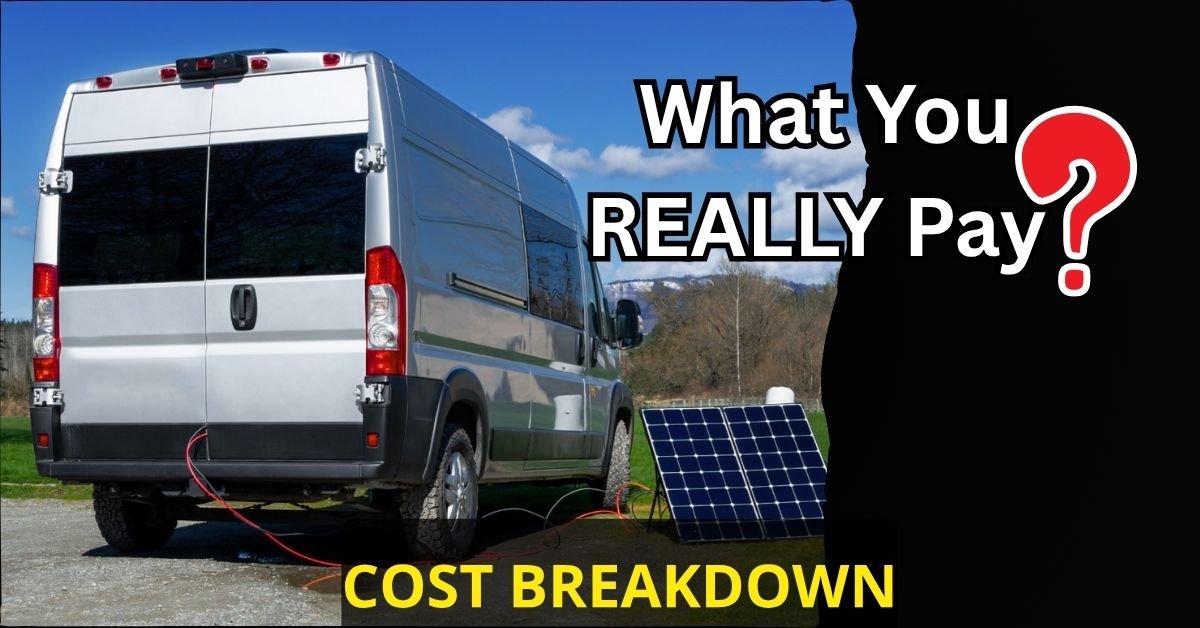Choosing the right solar panel wattage can make or break your solar investment. But what does “wattage” actually mean in practical terms? How many watts do you really need to power your home or RV? This guide will explain solar panel wattage clearly, with real-life examples and simple calculations anyone can follow.
Whether you’re a homeowner exploring solar energy or a weekend warrior outfitting your off-grid cabin, understanding panel wattage is crucial. Let’s demystify it.
What Does Solar Panel Wattage Mean?
Wattage refers to the amount of electrical power a solar panel can produce under standard test conditions (STC), which simulate a bright sunny day with optimal solar irradiance (1,000 W/m²), a cell temperature of 25°C, and clean panels.
In simpler terms, a panel’s wattage rating tells you its maximum power output under ideal conditions. For example:
- A 100-watt panel can produce 100 watts per hour in direct sunlight.
- A 400-watt panel can generate 400 watts per hour under the same conditions.
This doesn’t mean they’ll produce that amount all day, output varies with weather, shade, and panel orientation.
Common Wattage Ranges
Most residential solar panels fall into the 250W to 450W range, depending on the technology and manufacturer. But though commercial systems may use panels exceeding 500W. Here’s a quick table to understand easily:
| Panel Type | Typical Wattage Range | Efficiency (%) |
| Monocrystalline | 300–400W | 18–22% |
| Polycrystalline | 250–350W | 15–18% |
| Thin-Film | 200–300W | 10–12% |
Why the gap? Higher-watt panels use advanced materials and designs to convert more sunlight into electricity.
Solar Panel Power Output Per Square Meter
On average, a solar panel produces around 150 to 200 watts per square meter. This can vary due to:
- Panel efficiency
- Installation angle
- Sunlight exposure
Example: A 1.7 m² panel with 20% efficiency will produce about 340W in full sun.
| Panel Type | Watts per m² | Efficiency |
| Monocrystalline | 180–220 | 20–24% |
| Polycrystalline | 150–180 | 15–20% |
| Thin-Film | 60–100 | 10–13% |
Note: Monocrystalline panels lead in efficiency, making them ideal for rooftops with limited space.
Key Takeaway: Higher wattage per square meter means more power from smaller installations.
How Are Solar Panels Rated in Watts Per Hour?
Contrary to popular phrasing, panels are rated in watts (W), not “watts per hour.” Energy production is measured in watt-hours (Wh), which factors in sunlight exposure. For example, a 400W panel generates 2,000Wh daily with 5 hours of sunlight.

Average Solar Panel Output Per Day
Daily output depends on:
- Sunlight hours (geographic location)
- Panel angle and shading
- Efficiency losses (inverters, wiring)
For example:
A 400W panel in California (5.5 sun hours/day) produces roughly 2,200Wh daily, enough to power a fridge (700Wh) and LED lights (100Wh) with energy to spare.
- Arizona (6 peak sun hours): 300W × 6h = 1.8 kWh/day
- Washington (3 peak sun hours): 300W × 3h = 0.9 kWh/day
- Use the PVWatts Calculator (NREL tool) for precise local estimates.
- Use the local peak sun hours to estimate daily output accurately.
How to Calculate Your Wattage Needs
Solar Panel Watts Calculator: To calculate how much solar wattage you need, follow this simple formula:
- Determine daily electricity usage (kWh/day)
- Find local average peak sun hours
Use the formula:
Total Wattage Needed = (Daily kWh Usage ÷ Sun Hours) × 1,000
Example:
If your home uses 30 kWh/day and you receive 5 sun hours/day:
(30 ÷ 5) × 1000 = 6,000 watts or 6 kW system
Add a 10-20% buffer to account for system losses.
Solar Panel Tester Multimeter buy from Amazon!
- We firmly believe that quality shapes the future. FROGBRO is dedicated to continuously crafting and refining tools that …
- 【Latest Upgrade Tester】Now, it’s a breeze to measure any solar panel under 800 WATTS & 60 VOLTS!Thanks to the snazzy big…
- 【FB673PV Solar MPPT Meter】With rapid and accurate capabilities, the solar panel tester meter can assess the maximum powe…
How to Calculate Solar Panel Wattage for Home, RV, or Cabin
Usage Examples
- Home: A 2,000 sq. ft. home using 30 kWh/day needs a 6,000W system (30,000Wh ÷ 5 sun hours).
- RV: Powering a fridge (700Wh) and lights (100Wh) requires 1,600Wh/day. Use two 200W panels.
- Cabin: A weekend cabin needing 5 kWh/day can use four 400W panels.
Pros & Cons of High vs. Low Wattage Panels
| High Wattage (400W+) | Low Wattage (≤300W) | |
| Pros | Fewer panels, space-efficient | Budget-friendly, portable |
| Cons | Higher upfront cost | More panels needed |
- 📢👉【Comprehensive Solar Panel Tester Meter】UT673PV solar MPPT meter can effectively identify any abnormalities in solar p…
- 📢👉【Must Have – UT673PV Solar MPPT Meter】With rapid and accurate capabilities, the solar panel tester meter can assess th…
- 📢👉【Multi Protection for Safety】Our solar panel multimeter has multi protections like over-voltage protection, over-tempe…
- At GladJoJoY, we’re all about providing top-notch tools to make your life simpler and your work more efficient. We take …
- 【Upgraded series function】Say goodbye to the limits of the EY-1600W! Our upgraded 1800W solar panel tester steps up its …
- 【Your Solar Advisor】 Our solar multimeter is the perfect tool for testing the voltage, current, and power of your solar …
- Support Backlit Display of LED Screens : This solar panel tester is equipped with a backlit LED screen, which allows us …
- Multi Functional Design : EY1600W Photovoltaic Panel Multimeter,It can measure the maximum power point power, maximum po…
- Multiple Protections : In this Multimeter,we have Over temperature protection, over-voltage protection, over-current pro…
FAQs: Solar Panel Wattage Explained
How many solar panels do I need for 1,000 watts?
It depends on the wattage of each panel:
1. Using 250W panels: 4 panels
2. Using 400W panels: 3 panels
Does higher wattage mean better performance?
Not necessarily. Higher wattage means more power output per panel, but performance also depends on:
1) Efficiency
2) Durability
3) Brand quality
Is 100W enough for camping?
Yes, for light usage. A 100W panel can:
1. Charge phones and laptops
2. Run small LED lights
3. Power a small cooler with battery backup.
Final Tips & Mistakes to Avoid
✅ Tips:
- Always calculate your actual energy use
- Choose high-efficiency panels for limited space
- Consider future energy needs (EVs, appliances, etc.)
- Use solar calculators or consult a solar pro
❌ Mistakes to Avoid:
- Underestimating energy use.
- Ignoring local climate/sunlight.
- Buying panels without planning the inverter & battery size.
- Overpaying for underpowered systems.
Related Post: How to Monitor Solar Panel Output: Tools, Apps & Metrics.
Conclusion,
Understanding solar panel wattage is key to building an efficient and cost-effective solar system. Whether you’re powering a house, cabin, or RV, calculating the right wattage will save you money, energy, and frustration down the line.













